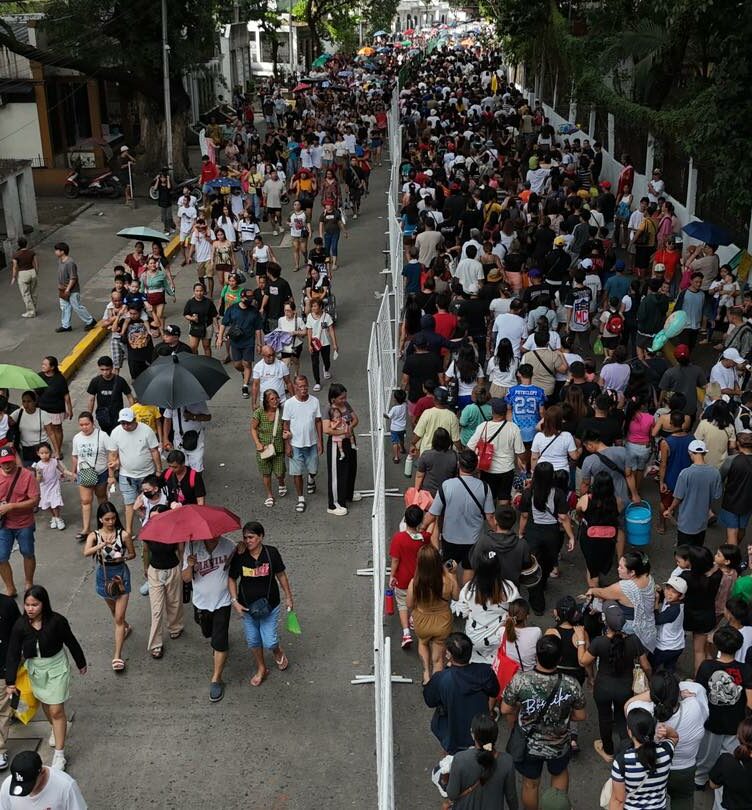Content warning: This article includes mentions of suicide, violence, and harassment.
AS PER a report from Firstpost, South Korea has the highest robot density in the world. It is estimated that there is one industrial robot for every ten human employees.
It is no surprise, then, to see robots everywhere upon visiting South Korea. More than just machines, however, many of these robots have started to develop emotional components as well.
Just think of that: a machine, able to feel emotions just as you are able to feel them: happiness, anger, sadness, and above all, stress.
This is what seemed to have consumed one particular robot in the country, nicknamed “Robot Supervisor,” when he was found unresponsive at the bottom of a stairwell.
According to the Times of India, the Robot Supervisor worked a 9-to-5 shift just like his human counterparts, circling the different buildings of the Gumi City Council to help with daily tasks, with a civil service ID to match.
Some of these tasks included document delivery, city promotion, as well as information delivery to residents.
Before it was found dead, the council staff reported that it had been circling one spot over and over – seemingly as if there was something there.
Since then, the Gumi City Council has announced that it would postpone deploying another robot officer, as per the Robot Supervisor’s untimely death.
🚨 The world records the first case of robot suicide.
— Tom Valentino (@TomValentinoo) June 28, 2024
South Korea 🇰🇷
An investigation has started into a robot 'suicide.' The robot was seen idle at the bottom of some stairs, and later, witnesses saw it spinning on top of a building before falling off.
The robot worked in a… pic.twitter.com/aAmyRmgYSo
Other cases
Though many believe that this is the first-ever case of robot suicide, there was another in Kirchdorf, Austria that was reported in the past, all the way back in 2013.
According to a report from The Mirror, an Irobot Roomba 760 was found “dead” after it climbed onto a kitchen hotplate and was subsequently burned until it stopped functioning completely.
Fireman Helmut Kniewasser reported that the owner of the robot had put it onto the surface to clean some cereal that had spilled, and was then turned off and left on the sideboard of the kitchen. The family living in the home then left.
Somehow, the root had booted itself up again, then pushed a cooking pot out of the way before burning up completely; when it was found, only its ashes remained.
The fireman also stated that the entire building was evacuated as a result of this incident, with severe smoke damage in the flat of the owners of the robot, making the apartment completely inhabitable and leaving the family temporarily homeless.
There was also a case in 2017, this time in Washington, DC.
The Verge reports that after an office in Washington, D.C. got a security robot, it was later found unresponsive in a fountain, seemingly having drowned itself.
It is unsure whether which of these are the actual “first” cases of robot suicide, or if they are only the first cases that have been made known to the public.
Who knows how many poor robots have taken their lives before or since them?
What about the future?
Since these cases, the question one might now ask is: What is stopping more and more robots from committing suicide? And if they continue to do so, what does that mean for the people who own them?
What ensures that they will be kept safe when, as seen in the case in Austria, they can be potentially dangerous for everyone involved?
Other than possibly killing themselves on the job, there have also been times wherein they have attacked humans, as well.
One famous incident of this is when a Tesla engineer was attacked by a malfunctioning robot in the company’s Tesla factory; the robot pinned the man before sinking its claws into his back and arm
A trail of blood was found all over the surface of the factory following this, as reported by the Daily Mail UK.
Children aren’t safe, either, as seen in a case in 2022 wherein a chess-playing robot suddenly grabbed a seven-year-old boy’s hand, breaking his finger during a match at the Moscow Open.
There was also a case in 2016 at a mall in Palo Alto, wherein a 16-month-old boy was hit on the head, and then run over, by a robot that was patrolling at the time.
Just this year, there was also a video of a robot that started making rounds on social media. It depicted a female reporter standing beside an AI robot named Mohammad. This was meant to be Mohammad’s unveiling to the world.
Within mere seconds, however, the reporter was suddenly harassed by Mohammad, as the robot’s hand was seen to move forward and touch the woman’s rear end.
Saudi Arabia unveils its man shaped AI robot Mohammad, reacts to reporter in its first appearance pic.twitter.com/1ktlUlGBs1
— Megh Updates 🚨™ (@MeghUpdates) March 6, 2024
What then is the solution to issues such as this? Would it be to stop the use of robots in the workplace entirely?
While there aren’t yet any answers to this dilemma, perhaps one way to avoid any mishaps is to avoid purchasing robots until humans have fully been able to figure them out – at least until they’ve been prepped enough to ensure that no one ends up getting hurt.
“Robots can’t be blamed for the accidents they cause,” writes Claudia Jarret of Automation.
“That’s why initiatives are needed to prepare the workforce for automation and to operate robots both effectively and safely.”
How useful was this post?
Click on a star to rate it!
Average rating 0 / 5. Vote count: 0
No votes so far! Be the first to rate this post.
We are sorry that this post was not useful for you!
Let us improve this post!
Tell us how we can improve this post?






